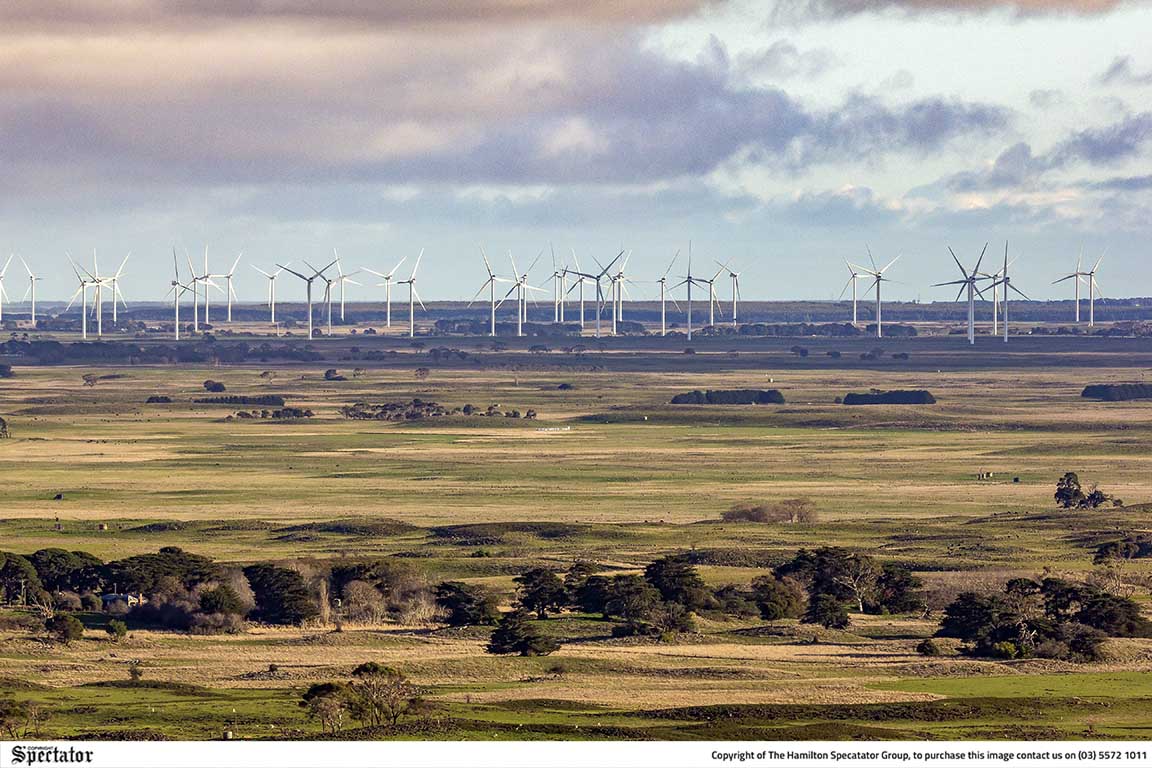
DEVELOPERS of the proposed Coleraine wind farm, European Energy held two public information sessions in Coleraine this week.
The Danish-based company hosted afternoon and morning teas on Tuesday and Wednesday respectively.
Reflecting the importance of the project, five of the company’s executives were on duty at The Catching Pen Café to answer questions and discuss the scheme.
Attended by over a dozen local residents –mostly farmers – European Energy (EE) provided answers to a range of questions, the answers to which give a clearer idea of the scope and timing of the project and the various issues at play.
So what are the vital statistics?
The area: The area being investigated for the project was an area running from Tarrenlea in the south to around Melville Forest in the north (refer to the map at right).
EE are talking to district farmers with a view to leasing wind turbine sites together with extra land for intra-farm roading and substations.
Turbine details: EE aims to construct a wind farm of 100 to 150 turbines.
These will have an overall height of 250 metres (roughly 12 cricket pitches) above ground level, measured to the tip of an upward-pointing rotor blade.
The diameter of the rotors will be 140 to 150 metres (seven to eight cricket pitches).
The lowest point of the rotor will thus be some 90 to 100 metres above ground level and well clear of the red gum canopy.
Electricity to be generated: EE told The Spectator that the capacity of the generators will be 7.2 Megawatts.
The company’s literature indicates that this will be sufficient for each generator to power over 4000 homes.
Timing: The project is in the first or ‘screening’ stage. The two subsequent stages are development and construction.
Development can take four to six or even seven years and construction two to three years. EE stakeholder relations officer, Kerrie Jocumsen said a six to eight year horizon was the best estimate at present.
Thus, the project could come on line by the end of 2030 at the (estimated) earliest.
Impact on farmland: EE has assessed that a footprint of approximately 0.6 hectares (1.5 acres) of land will be taken up by each turbine’s base and associated roading.
EE development manager, Steve Gibson said the 400 cubic metres of spoil from each turbine’s base would be either utilised as sub-base for the roading or removed from the site.
He also said that topsoil would be separated and set aside.
On decommissioning of the site, the concrete base would be levelled to one metre below ground level with topsoil replaced.
Economic life: EE’s literature estimates an economic life of a turbine to be around 25 years – although this can be longer.
Mr Gibson said that (counterintuitively), the pylon (tower) can often be the trigger for replacement.
This is because of the weight of the generator and turbine blades and the constant flexing under the force of western Victoria’s winds.
Distance of houses from turbines: Turbines will not be built at distances of less than one kilometre (50 cricket pitches) from houses although this can be varied for houses within a farm’s boundaries.
Fire Risk: This is the first of two big questions.
Near Portland, in June of this year, a wind generator caught fire and burning debris was dispersed.
Although no bush or grass fire resulted, a similar event in high summer or early autumn could have disastrous consequences.
Mr Gibson said this was a critical issue but that, at present, there was no information regarding safety systems to prevent generator fires.
Birds and Bats: The second big question.
As discussed in The Spectator before, there is a growing body of literature on bird and bat deaths caused by wind turbines.
All bats and raptors (eagles and hawks) are particularly vulnerable.
Technologies have been developed in recent years to protect large birds, the best known being IdentiFlight from the USA.
This has been deployed at the Cattle Hill wind farm in Tasmania.
Mr Gibson said the technology was not specified for the current project but, given the embryonic stage of the development, this could change.
It is difficult to comment on the mood of the meeting overall as a number of conversations were taking place.
Bulart-based farmer, Katrina Rainsford, who attended, asked some penetrating questions and afterwards said, “It is important for our council to understand any new developments in our Shire. With any development there are challenges and opportunities.”
Mr Gibson said, “We are investigating the potential for a wind farm. It’s ultra-early engagement. We want to check the pulse of the community.”






